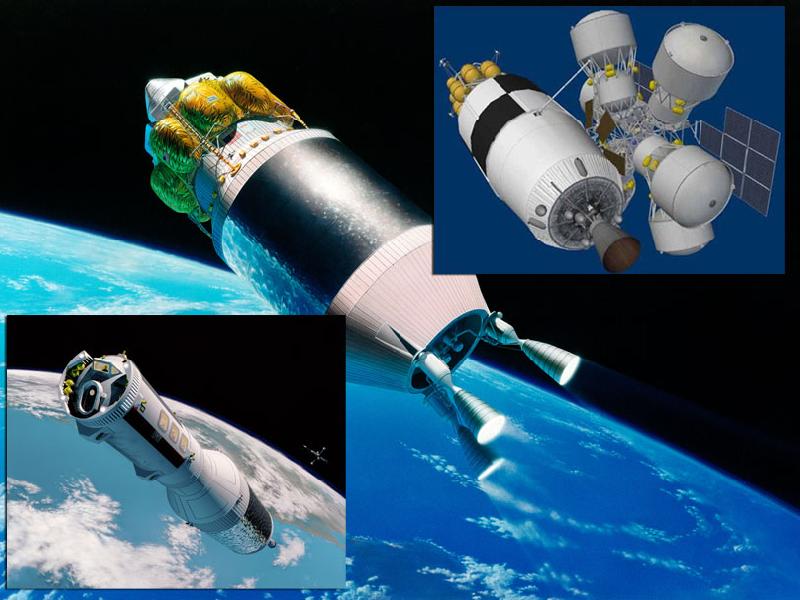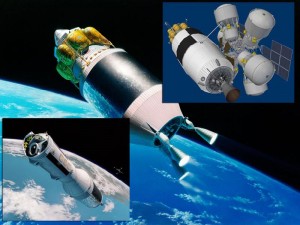March 17, 2014 – Well not literally gas stations, but propellant depots that will act like stepping stones from near-Earth orbit to the Moon and beyond.
Today our rockets carry all of the fuel on board that they need for any space mission. You don’t do that with your automobile when you start on a cross-country road trip. So why are we doing this in space?
What we need to establish is way stations that serve as the gas stations of space. With depots of this type rockets leaving Earth could launch with much heavier payloads knowing that they can gas up once in orbit.
Massachusetts Institute of Technology recently described, in the journal Acta Astronautica, depot designs that would be capable of stockpiling excess fuel from spacecraft heading to the Moon and back. So instead of burning up propellant through the atmosphere either in staging on ascent or upon return to Earth, the spacecraft would deposit fuel they don’t need for the return trip at one of these depots. Over time the depot would collect a significant amount of fuel. Then an outbound rocket could drop in and access additional propellant for its outbound journey.
The depots would be located at libration points where gravity exerted by the Sun, Earth and Moon cancel each other out. Five locations have been identified as likely places where depots can be established.
Two concepts are proposed. The first is labelled “steady-state.” The second “stockpiling.” In the former the depot is pre-fuelled providing contingency propellant as well as a human habitat module that can be reused. In missions using this approach the astronauts and their launch vehicle would rendezvous, attach the habitat, and use the propellant to get to their end destination. Upon return they would leave the habitat in working order and any remaining fuel for use in future missions. In the latter the astronauts would bring excess fuel along with them and stockpile it at the depot for future use by a wide range of missions some requiring larger fuel payloads to achieve their objective. In both cases the depots would begin with a basic inventory of propellant and would accrue any excess from spaceships passing by.
The neatest thing about establishing gas stations in space is you end the budgeting cycle approach to space missions. With a continuous inventory of propellant missions can happen even in years when an organization like NASA starts a project and then suddenly has the funding pulled by a spendthrift Congress.
The main challenge the fuel depot approach will have to overcome is the phenomenon known as “boil-off.” This can easily happen in space if the fuel is not kept in a steady cold state. That will mean shielding the propellant tanks and pumping apparatus from solar radiation so that it doesn’t boil away.
The three pictures below represent some of the depot design concepts NASA has been considering for future missions to Deep Space.













